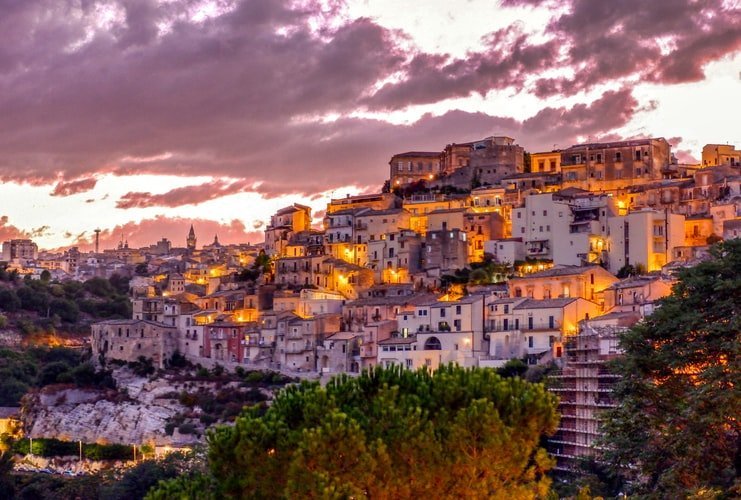Venice becomes the world capital of artistic trends of our time. A guide to the hundreds of exhibitions by Hostelsclub.
In conjunction with the Biennial of Visual Arts, Venice becomes the world capital of the artistic trends of our time. Hundreds of historical and contemporary exhibitions will enliven the city, squares, bridges and churches. An unmissable moment to visit a blooming lagoon after the long winter. We offer a guide to the must-see exhibitions, from the end of March until the first weeks of May, with some of the best low budget places to stay.
'Art is the Sunday of life' - Charles Baudelaire
The Venetian spring begins in the name of Contemporary Art. From March 20th to the first ten days of May with the opening of the Biennale d'Arte - mother of all art exhibitions in the world - Venice will be the ideal destination for those who want to immerse themselves in the latest trends art of our time. The palaces open on the Grand Canal, the flowering terraces, a swarm of motorboats in the Lagoon and the inaugurations in every corner of the city, among squares, canals and bridges, are all obligatory stops for those who want to find out which direction the art world is going.
The official offices of the Arsenale and the Gardens are open for visits, and the international pavilions show us the meaning of our time, in which way the present, our actuality, is declined in the forms of the spirit: evil, good, wars, desires, poverty and excess. Art helps us to understand the destinies of the time in which we live, to see the expressions of life, of struggle, of love, of hatred, of the affirmation of people, but also of our destinies as single, happy men or women. Lost, in the sign and in the manifestations of economic and financial capital.
There is a time when Venice assumes the trouble of operating this global synthesis. More than New York, Hong Kong or London. When it happens - like this year, and every two years by tradition - you are faced with a Babel, undisputed and rediscovered. A melting pot of languages, cultures, faces from all over the world. In the first days of May Venice hosts the spirit of London, Paris, New York, Shanghai, Dubai and Sydney, but also of the third world countries, the poorest and most remote and the most confined places that have the opportunity to express themselves in an accomplished form and an exhibition.
A mantra, an invocation hovers over this Venetian spring - May You Live in Interesting Times. It is an ancient Chinese proverb - probably a fake - but which is also the title of this Biennale and to which all the major, minor, collateral, and parallel exhibitions revolve around, a great concert aimed at showing us that contemporary is above all alive, elusive, and definitively impregnable.
In the following guide you will find the main exhibitions that are not to be missed according to HostelsClub.
1. LETIZIA BATTAGLIA AT THE CASA DEI TRE OCI

Credits @Letizia Battaglia
From March 20 to August 18 2019, the Casa dei Tre Oci will inaugurate a major retrospective dedicated to Letizia Battaglia (Palermo, 1935), curated by Francesca Alfano Miglietti, promoted by the Venice Foundation and with the participation of Tendercapital. On display will be over 300 photographs, many of which are unpublished which give us glimpses of Sicily and the crimes of the mafia immortalized by Battaglia, first as a simple reporter and then as the undisputed teacher of a crude realism. Letizia Battaglia is one of the most significant protagonists of Italian photography, and the exhibition certainly traces its entire career starting from the large amount of documentation offered. An anthological exhibition that can be read as a portrait of a counter-intellectual intellectual. "I have experienced photography as a document, as an interpretation and as yet", the Sicilian photographer said of herself, "I lived it as salvation and as truth". An intellectual against the current, but also a poetic and political photographer, a woman who was interested in her surroundings and what, far from her, made her curious.

A glimpse of the Casa dei Tre Oci
Letizia Battaglia was born in Palermo on March 5, 1953. In 1985 she was the first European to win the W. Eugene Smith Award, the famous photographer of "Life" (1985). "I worked for L’Ora in Palermo from 1974 to 1991. At every crime scene, I was forced to run on the spot and shoot, but I didn't want to. I felt like throwing up, I kept smelling the blood everywhere, even at home. It caused me a lot of pain. I was not a photographer who documented a foreign conflict. I was on my island, in the middle of a civil war". In forty years of work with the Leica M2, rigorously in black and white, she has documented that world wherever it was, a world that was and still is scary. Criminal power, bullying, corruption, and blood.
2. PLACES AND SIGNS AT PUNTA DELLA DOGANA

A view of the Punta della Dogana, one of the homes of the Pinault Collection
Punta della Dogana presents the exhibition "Place and Signs", curated by Martin Bethenod, director of Palazzo Grassi - Punta della Dogana, and Mouna Mekouar, independent curator. The title of the exhibition takes its name from the work of Carol Rama and brings together some thirty artists whose works have a special relationship with their urban, social, political, historical and intellectual context. Among the many artists are EW Berenice Abbott, Trisha Donnelly, R. H. Quaytman, Wu Tsang, and group works, by Louise Lawler, Agnes Martin, Julie Mehretu, Anri Sala and Šejla Kamerić, and Tatiana Trouv. They are presented for the first time in the Pinault Collection exhibitions in Venice. These works interact with some of the works that have made the history of exhibitions at Punta della Dogana during the ten years since it opened in 2009. The exhibition will be accompanied by an extensive program of events, performances and meetings, all open to the public and which will take place at Punta della Dogana and the Teatrino di Palazzo Grassi.

Work of Carol Rama
Born in Turin in 1918, Carol Rama began painting as a teenager without any academic training but supported in her passion by with some important meetings. From the poet Edoardo Sanguineti to the Turin musicologist Massimo Mila, from the painter Albino Galvano to the architect Carlo Mollino, to the collector Carlo Monzino, from Luciano Berio to Eugenio Montale, to name a few. She uses the inner tubes of bicycles and transforms them into paintings which are precociously poor, and where the pink color of the rubber becomes leather and the bundled tubes look like bowels and veins, as for Carol Rama the body is everything. The body is almost always amputated, or even artificial, as in limb, leg and arm prostheses, painted after seeing it in real life in Second World War hospitals.
3. LA PELLE OF LUC TUYMANS AT PALAZZO GRASSI

Work of Luc Tuymans
Palazzo Grassi presents the first solo exhibition of Luc Tuymans in Italy (Mortsel, Belgium, 1958), as part of the monographic program that since 2012 to today has alternated with thematic exhibitions of the Pinault Collection. The exhibition entitled La Pelle - from the book by Curzio Malaparte published in 1949 - is curated by Caroline Bourgeois in collaboration with Luc Tuymans and presents over 80 works, tracing a path focused on the artists pictorial production, with a selection of paintings ranging from 1986 to present, from the Pinault Collection, and from international museums and private collections. Considered one of the most influential artists on the international scene, Luc Tuymans has devoted himself to painting since the mid-1980s and has contributed to the revival of the pictorial medium in contemporary art throughout his career. His works deal with issues of past and recent history, but also with daily subjects through a repertoire of images from the personal and public sphere -from the press, television or the web - represented through an unfamiliar, rarefied light, restoring them in a form aimed at arousing a certain anxiety in order to obtain - as the artist himself described - a "genuine falsification" of reality.

Internal view of Palazzo Grassi, exhibition home of the Pinault Collection
Luc Tuymans was born in 1958 in Mortsel, Belgium. He lives and works in Antwerp and is recognized for having contributed to the revival of painting in the 1990s, the Belgian artist continues to affirm the relevance of his work by addressing a wide range of subjects. His works are based on pre-existing images and deal with questions of the past and its representation along with daily subjects returned through a non-familiar light. His work has been the subject of several solo exhibitions dedicated to the artist, including: "The Swamp" at Reset Gert Robijns, Borgloon, in 2017, "Glasses" at the Museum aan de Stroom (MAS), Antwerp, in 2016 and later presented at the National Portrait Gallery, London, 2017, "Intolerance" at the Qatar Museums Gallery Al Riwaq, Doha, "Birds of a Feather" at the Talbot Rice Gallery University of Edinburgh, Edinburgh, in 2015, "Nice. Luc Tuymans ”at the Menil Collection, Houston, in 2013.
4. THE NATURE OF ARP AT THE PEGGY GUGGENHEIM COLLECTION

View of the Palazzo Venier dei Leoni, home of the Peggy Guggenheim Collection
From April 13 to September 2, La natura di Arp, curated by Catherine Craft will be on display at the Peggy Guggenheim Collection, organized by the Nasher Sculpture Center in Dallas, the first exhibition venue on the exhibition. An exhibition on the work by the Franco-German artist Jean (Hans) Arp (1886–1966), whose experimental approach to the creation and radical rethinking of traditional art forms has made him one of the most influential artists of the twentieth century. The artist - in his 16 years of activity - has created a corpus that will have a considerable influence in the history of art and in a range of materials and formats that recall its productive versatility. Arp is one of the founders of the Dada movement, a pioneer of abstraction, and develops a language of organic and curvilinear forms that move fluently between abstraction and representation, becoming a reference point for generations of artists. There are seven works by Arp that belong to the Venetian museum, all exhibited on the occasion of the exhibition.
"The first thing I bought for my collection was a bronze by Jean Arp. [Arp] took me to the foundry where it had been melted and I fell in love with it so much that I asked to be able to hold it in my hands: in the same instant I felt like I wanted to be the owner "recalls Peggy Guggenheim in her autobiography A life for art (Rizzoli Editori, Milan, 1998).

Sculpture work by Jean Hans Arp
Hans Arp, Jean (Strasbourg, 1887), studied at the Weimar Academy of Fine Arts and then at the Julian Academy in Paris. In 1914 he took refuge in France, and the following year he was in Switzerland where he met the painter Sophie Taeuber, whom he later married. In 1928, he practiced automatic writing with the surrealists. Arp participated in "Cercle et Carré" (1929), in "Abstraction-création (1932), and in Allianz (1937). Around 1930, he introduced a variant in his collages with "torn papers". With the declaration of war, Arp made his name in Jean. From 1942 to 1945 Arp took refuge in Switzerland where Sophie Tauber-Arp tragically died.
5. BURRI ON THE ISLAND OF SAN GIORGIO

Alberto Burri, Rosso Plastica, 1963 © Fondazione Burri
The Giorgio Cini Foundation presents a retrospective dedicated to the "Master of the subject" Alberto Burri (Città di Castello 1915 - Nice 1995), curated by the art historian and President of the Burri Bruno Corà Foundation. The project, born from the synergy between the two institutions and designed in collaboration with Tornabuoni Art and Paola Sapone MCIA, aims to crown a journey of international recognition linked to the centenary of the birth of the Umbrian artist. The exhibition offers a chronological reconstruction of the most important stages of Alberto Burri's artistic career through about fifty works chosen from his most significant series: the very rare Catrami, the Muffe and the monumental Sacchi, up to the Combustion, Woods, and Plastics. The reading of his artistic career continues in a multimedia documentary section, through the projection of some rare films that portray him in action.

A glimpse of the internal architecture of the Giorgio Cini Foundation
Alberto Burri was born in 1915 in Città di Castello. During World War II he enlisted as a medical officer, but in 1944 he was captured in North Africa with his company imprisoned in Hereford, Texas, where he began to paint on the sackcloths that are available. After his imprisonment, he moved to Rome where he held his first personal exhibition at the La Margherita Gallery the following year. Burri criticized the widespread politicized realism of the late forties and moved towards abstraction to become a protagonist of the Informal. In 1949–50 he experimented with new and unorthodox materials creating tactile collages made of sacks, tar, pumice stone. In this period he created the series of Muffe and Gobbi, the latter with modeled canvases that break the traditional two-dimensionality of the support. The interest in the ambiguity of the pictorial surface and the unusual materials lead Burri to contribute to the Origin Group, which he exhibited in 1951 at the Galleria dell'Obelisco, Rome.
6. BASELITZ AT THE ACCADEMIA GALLERY

In conjunction with the Venice Biennale of Art, the Galleries will open an exhibition that traces all the crucial periods and crossroads of the German artist's sixty years of career, through paintings, drawings, and sculptures. It is the first time that the Academy has opened its doors to a contemporary living artist. "I am happy to have been invited to present my work at the Academy Galleries in Venice next year." Baselitz explained, "I have known the museum for some time and it is a pleasure to work with Kosme de Barañano on a highly original project." It is an exhibition tailored to the Venetian spaces of the Academy and is curated by Kosme de Barañano, anthological, and with the ambition to bring the crucial junctions of the sixty years of the German artist's careers into dialogue.

Work of Gerorg Baselitz
Georg Baselitz is a German artist known for his neo-expressionist paintings which are often characterized by men upside down. His work includes sculpture and engraving and he often explored what it meant to be a German artist in the post-war period. Bold colors and strong brushstrokes are the basis of the themes often folkloric or archetypal. "I begin with an idea, but as I work, the photo takes over," he said of his trial. "Then there is the struggle between the idea that I have a preconception and the image that fights for its own life." Born Hans-Georg Kern on January 23, 1938 in Deutschbaselitz, Germany, Baselitz renamed himself after his hometown in 1961.
7. PHILLIPE PARRENO AT THE ESPACE LOUIS VUITTON

View of an installation by Philippe Parreno, Anywhen, 2016, Tate Modern Turbine Hall
Entitled Displacing Realities, the exhibition of Philippe Parreno at the Espace Louis Vuitton near Piazza San Marco, will be held from 11 May to 24 November, but for now, there is very little information about this exhibition out there. Philippe Parreno is a contemporary French artist whose multidisciplinary practice includes collaborations with Pierre Huyghe, Liam Gillick and Rirkrit Tiravanija. As part of his practice, Parreno examines how representation systems and memories produce meaning. The incomplete screenplay by the artist L'Histoire d'un sentiment (1996) is a gesture that draws attention to the narrative of production through the imagination of an imaginary creative project that will never be realized.

An interior of the space of the Espace Louis Vuitton
Philippe Parreno was born in 1964 in Oran, Algeria, and grew up in Grenoble, France, attending the École des Beaux-Arts in the city before moving to Paris to study at the Institut des Hautes Études en Arts Plastiques of the Palais de Tokyo. His first rise to prominence was in the early 1990s, and his early work includes videoconference lectures that include footage from television programs and popular films. In the years that followed, the artist produced both visual and written texts analyzing a series of topics. He continues to live and work in Paris, France. Today, Parreno's works are preserved in the collections of the Solomon R. Guggenheim Museum in New York, in the Tate Modern in London and of the Center Georges Pompidou in Paris, among others.
8. ARSHILE GORKY IN THE SALE OF CA' PESARO

A view from the Grand Canal of Ca 'Pesaro
Ca 'Pesaro presents the first Italian retrospective dedicated to Arshile Gorky (1904-1948), considered one of the key figures of 20th-century American art. The exhibition takes the stages of the career of Arshile Gorky into consideration, from the early works of the Twenties, years in which painting is characterized by the relationship with the works of Cézanne, before passing through the highest points of his self-taught studio of masters and movements modern, up to the stage in which all these stimuli flow into a powerful and singular vision. Arshile Gorky, pseudonym of Vosdanik Adoian, was born in the village of Khorkom, in the province of Van in Armenia, on April 15, 1904. Due to the Turkish invasion, the Adoians were forced to become refugees; Gorky himself left Van in 1915 and moved to the United States in February 1920, where he lived with relatives in Watertown, Massachusetts, and with his father settled in Providence, Rhode Island. From 1922 he resided in Watertown and taught at the New School of Design in Boston. On show are around 80 works from international collections, both institutional and private: including the Tate in London, the National Gallery of Art in Washington DC, the Whitney Museum of American Art in New York, the Center Pompidou in Paris, the Israel Museum of Jerusalem.

Work of Arshile Gorky
The inimitable quality of the latest works was recognized by the surrealist poet André Breton who, in the preface to the catalog of a 1945 Gorky exhibition, described it as a "hybrid", recognizing the complexity with which Gorky evoked the natural world, uniting it with a multitude of personal memories and different influences.
9. BRIGITTE NIEDERMAIR SURPRISES PALAZZO MOCENIGO

Campaign M+F Girbaud 2004 THE LAST SUPPER, 58x30,12 cm, without frame
Brigitte Niedermair's solo exhibition at the Palazzo Museum, curated by Charlotte Cotton, from 9 May to 24 November 2019, is a dynamic interaction of the artist's photographs taken from her archive of over twenty years of photographic practice. An exhibition in dialogue with the architecture and furnishings of the communicating rooms of Palazzo Mocenigo. Collaborating with Charlotte Cotton, curator of international photography, Niedermair has responded to the distinct atmosphere of each room and has included her classic fashion and still life photos in these historical environments, ranging from the most intimate rooms up to the most impressive and large rooms.
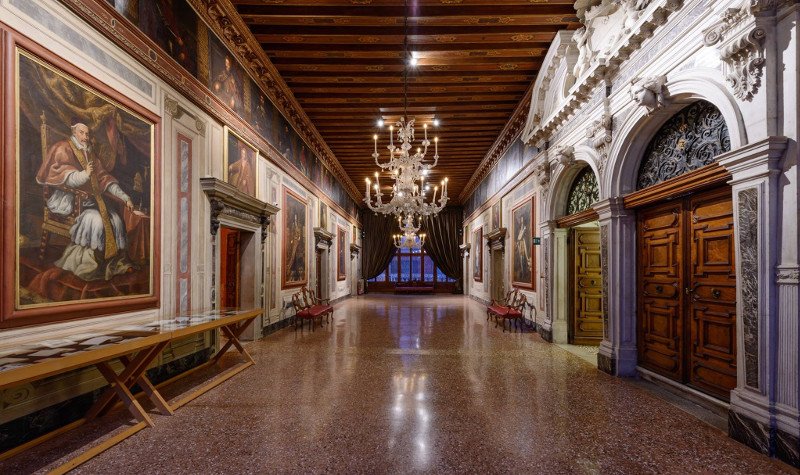
A room in Palazzo Mocenigo
The synergy between the public and the once-private interiors of this historic building belonging to the Mocenigo family - the Venice Museum of Textiles and Costumes since 1985 - and Niedermair's photographs are multi-layered, with a tenor that moves from one room to another. Niedermair selected the paintings from the Palazzo Mocenigo collection to replace them with her photographs in order to consciously amplify and contrast with the embedded subtitles of gender and identity that permeate these interiors, which are mainly from the 17th century. The observer of the installation gradually becomes aware of the fact that the only women who look out of the confines of their frames date back to the seventeenth and eighteenth centuries, while their contemporary counterparts resist.
10. "THAT YOU CAN LIVE IN INTERESTING TIMES"
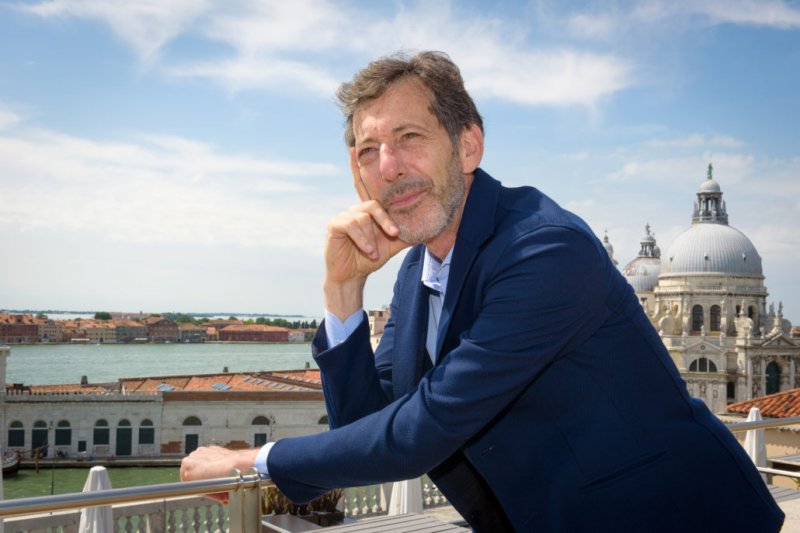
The curator of the Biennale d'Arte 2019 Ralph Rugoff in the traditional photo at the Ca 'Giustinian site
The pre-opening of the 58th International Art Exhibition entitled May You Live In Interesting Times, curated by Ralph Rugoff, organized by the Venice Biennale and chaired by Paolo Baratta, will take place on May 8th, 9th and 10th, the awards ceremony and inauguration will take place on Saturday, May 11th, 2019. The exhibition will consist of the Central Pavilion at the Gardens and the Arsenal, including 79 artists from across the world. The exhibition will be flanked by 90 National Participations in the historical Pavilions at the Gardens, the Arsenale and in the historic center of Venice. There are 4 countries present for the first time at the Art Biennale: Algeria, Ghana, Madagascar, and Pakistan. The Dominican Republic and the Republic of Kazakhstan are also participating for the first time in the Art Biennale with their own pavilions.

A view of the spaces of the Arsenale of the Venice Biennale
Ralph Rugoff has said: "May You Live in the Interesting Times will undoubtedly include works of art that reflect on the precarious aspects of our current existence, including the many threats to the founding traditions, institutions, and relations of the 'post-war order'. However, we immediately recognize that art does not exercise its forces in politics. For example, art cannot stop the advance of nationalist movements and authoritarian governments, nor can it alleviate the tragic fate of refugees all over the planet (whose number now corresponds to almost one percent of the entire world population). In an indirect way, however, perhaps art can offer a guide to help us live and think in these 'interesting times'. The 2019 Biennale Arte will not have a theme in itself but will highlight a general approach to making art and a vision of the social function of art that includes both pleasure and critical thinking. The exhibition will focus on the work of artists who question existing categories of thought and open us to a new reading of objects and images, gestures and situations. A similar art arises from the propensity to observe reality from multiple points of view, that is to take into consideration apparently contradictory and incompatible notions, and to juggle different ways of interpreting the world around us. "
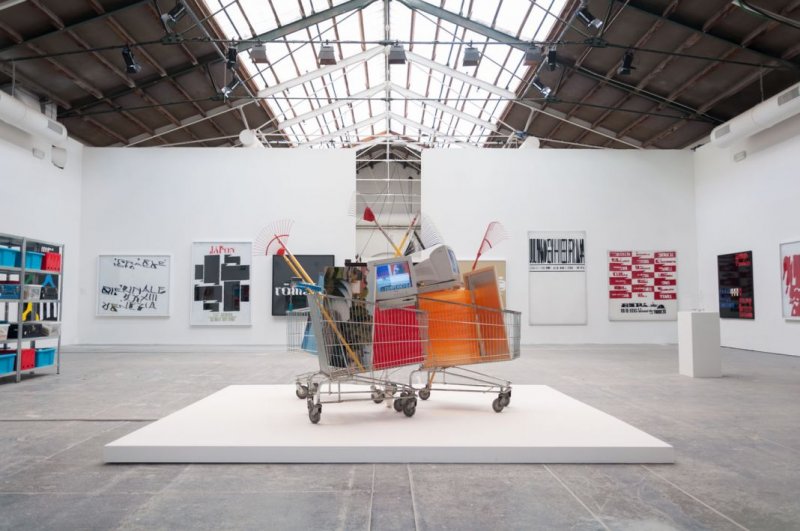
A photo of the 2015 Biennale of Art signed by Christine Macel
There are 21 Collateral Events that have been admitted by the Curator and promoted by national and international non-profit organizations and institutions. Organized in numerous venues in Venice, they offer a wide range of contributions and participation that enrich the pluralism of voices that characterizes the exhibition. For the tenth consecutive year, the Biennale dedicates the Biennale Sessions project to universities, academies and all institutions operating in research and education in the field of arts, architecture and related fields. The goal is to offer facilitation to three-day visits organized by them for groups of at least 50 students and professors, with the possibility of organizing seminars in exhibition venues offered free of charge and assistance in organizing travel and accommodation.
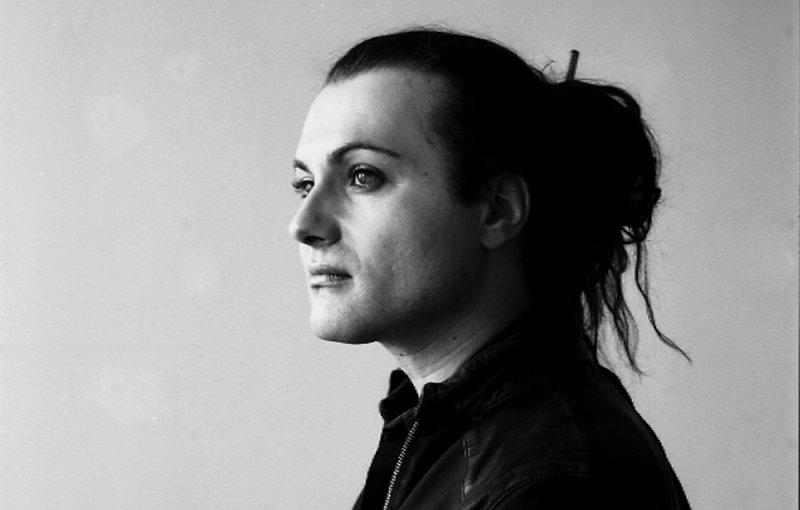
The Curator of the Italian Pavilion, Milovan Farronato
Enrico David, Chiara Fumai and Liliana Moro are the artists who represent Italy - the country that plays host the Venice Biennale - under the direction and care of Milovan Farronato, director of the Fiorucci Art Trust, for which he has developed the festival Volcano Extravaganza in Stromboli since 2011.
"Internationality, contemporaneity, creativity - declared Bonisoli, the Italian Minister of Activities and Culture - are the words that will characterize the Italian Pavilion project at the Venice Biennale, thanks to the contribution of these three protagonists of the art, whose works will give life to an original and innovative exhibition under the expert guidance of a curator their age".
"The objectives of support, promotion, enhancement of the Italian art of the Directorate General for Contemporary Art and Urban Suburbs that I direct - says Commissioner of the Italian Pavilion Federica
Galloni - are fully represented by the three artists chosen for the next Italian participation in Venice they will be able to transmit depth of vision and quality of research to the international public”.

The exterior of the Italian Pavilion at the Arsenale
"At the turn of two generations, the works and biographies of Enrico David, Chiara Fumai and Liliana Moro, although very different - explains the curator of the Italian Pavilion Milovan Farronato - mark significant contemporary artistic paths that stand out for their spirit of research between the past and here. Their works stand out due to the inextinguishable desire to explore territories where everyday life, survival, tradition, and narration have a strong presence. I have worked closely with these three artists over the years, on the occasion of solo and group exhibitions in Italy and abroad, and I am happy to be able to combine their practices in this large-scale exhibition, which will include new works and also works from the past".
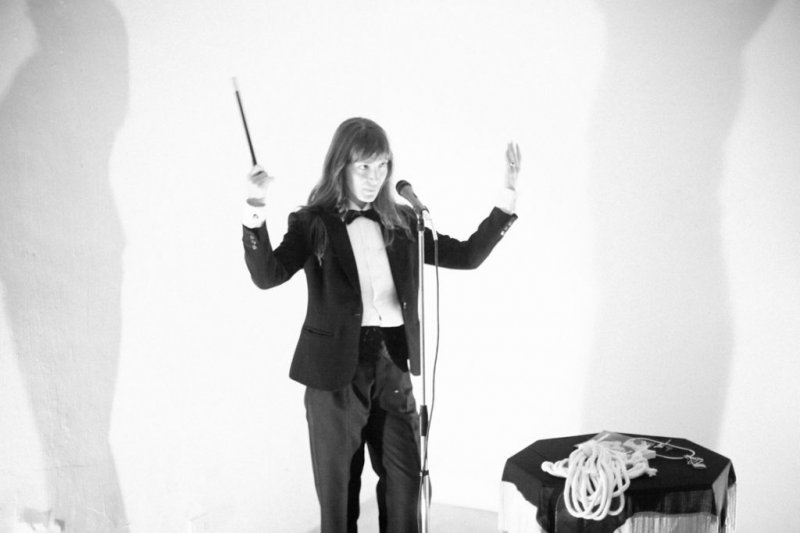
Chiara Fumai, Houdini, 2011
